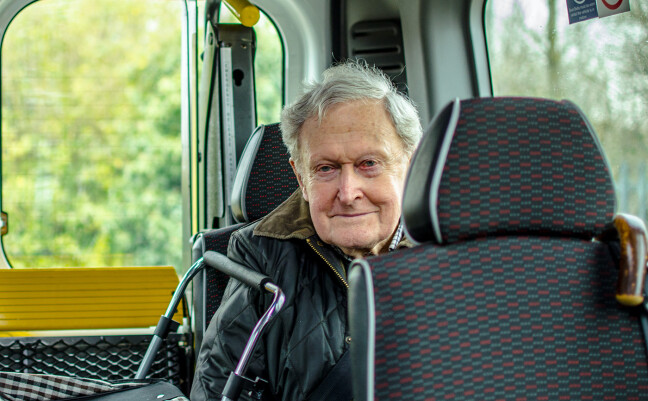North Norfolk Community Transport is committed to lowering the environmental impact of its activities. Our Trustees have made the following pledge which is identified in our operating strategy:
To develop a sustainability strategy for the organisation and reduce any negative impact on the environment.
We aim to achieve this by:
- Increasing the proportion of vehicles in the fleet that are not fuelled by fossil fuels
- Calculating our scope 1 and 2 emissions so that we can aim to reduce them with a carbon reduction plan
- Improving our premises to reduce carbon emissions
Measures of success:
- Vehicles in the fleet which do not use diesel to be 20% be January 2025 and 30% by January 2027
- A reduction in emissions per mile of our overall fleet
- Insulated and refurbished interior of our unit
- Reduction in our carbon footprint demonstrated annually and a significant drop in carbon emissions by 2030.
Why has the charity decided to work towards completing these steps?
NNCT accepts that increasing atmospheric carbon levels in the atmosphere are having profound effects on the environment including rising atmospheric temperatures and changing weather patterns. People around the world experience more frequent extreme weather events which are now impacting on the way people and wildlife are living their lives. Sea levels are rising as the temperature of our planet increases and this results in shorelines being eroded, destroying ecosystems and displacing coastal cities and towns.
As a charity that cares about people, we want to make our own contribution to lowering the environmental impact of our activities.
In 2024 a report was funded for us by the Shared Prosperity Fund, as part of the UK government's 'Levelling Up' agenda. This programme of support for organisations working within North Norfolk is managed by a consortium of North Norfolk's local authorities, with direct business support provided by Groundwork East's Sustainable Business Services team. The full report can be found here NNCT Environmental Report 2024 but an overview of our carbon footprint for 2022 and 2023 is set out below:
Greenhouse Gas (GHG) Reporting
In line with Environmental Reporting Guidelines and the Greenhouse Gas Protocol GHG emissions inventories are broken down into direct and indirect emissions. These are categorised into Scope 1, Scope 2 and Scope 3 emissions according to which activity and fuel or energy use they arise from. They are expressed as tonnes of CO2 equivalents (tCO2e), which is the standard unit used to compare and account for emissions from various GHGs based on their respective global warming potential.
Scope 1: These are Direct Emissions which arise from the activities of an organisation and include fuel combustion onsite such as gas boilers and fleet vehicles.
Scope 2: These are Indirect Emissions from electricity purchased and used by the organisation. Emissions are created during the production of the energy used by the organisation.
Scope 3: These are are other Indirect Emissions from activities of the organisation, occurring from sources that they do not own or control. These include business travel, commuting, up and downstream value chain, transportation and waste. This report includes, by default, emissions associated with the Transmission and Distribution (T&D) and production of other fuels.
| Emission Source |
2022 tCO2e |
2023 tCO2e | |
|---|---|---|---|
| Scope 1 | Business Vehicle Fleet (Diesel) | 30.4 | 28.2 |
| Scope 2 | Grid Electricity | 2.0 | 1.4 |
|
Scope 3 |
Fuels and Energy (Diesel) (not included in Scopes 1 & 2)
Grid Electricity T&D and WTT Commuting Homeworking |
7.3
0.7 3.4 0.3 |
6.9
0.4 6.9 0.3 |
| Total | 44.1 | 40.8 |
Recent Energy Efficiency Measures Undertaken
We have started a long-term goal to replace our current diesel passenger fleet with electric vehicles in an effort to reduce its carbon footprint and reach a net zero goal. This began in 2020 when a diesel Wheelchair Accessible Vehicle (WAV) was replaced with an electric alternative. We are hoping to be able to replace a minibus this year in the next stage of the phased switch over.
Other actions we have already taken to reduce our carbon footprint:
- 2023 LED lightening was installed into the offices to replace older inefficient fluorescent lighting.
- New double-glazed windows and doors were fitted.
- We continue to use a renewable energy tariff.
As can be seen from the electricity usage figures and resulting carbon footprint from this emission source, there was a reduction noticed from 2022 to 2023. This may have been partly due to the changes above.
Using the vehicle litre consumption data provided for 2023 we can see a usage decrease despite increased passenger journeys. This is a good reflection on our efforts to make more efficient use of resources.





